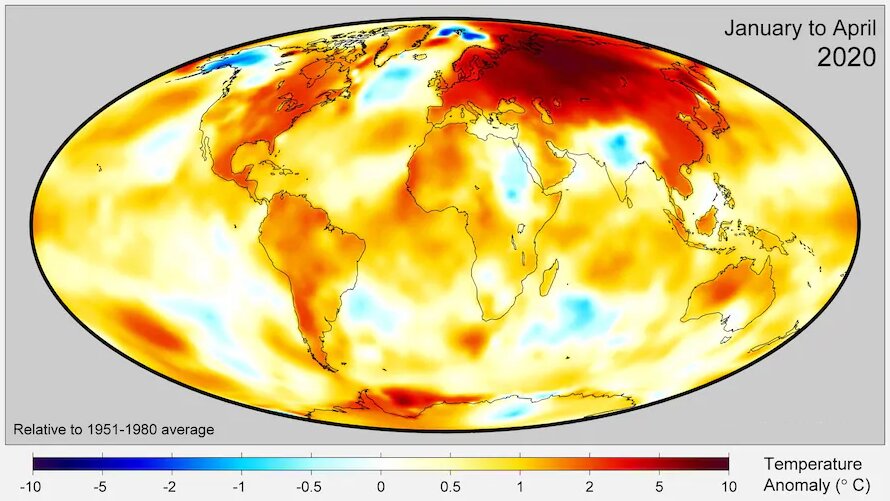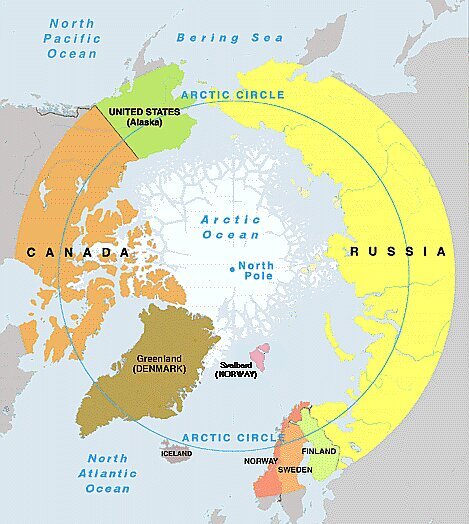Biodiversity & Environment
Zombie Fire
- 01 Oct 2020
- 6 min read
Why in News
According to a new study, the fire regimes in the Arctic are changing rapidly, with ‘zombie fires’ becoming more frequent in addition to fires occurring in the once-frozen tundra.
Key Points
- Features:
- Zombie Fire: It is a fire from a previous growing season that can smoulder under the ground which is made up of carbon-rich peat. When the weather warms, the fire can reignite. These are also known as holdover fires.
- The fires in the Arctic spreading to areas which were formerly fire-resistant is a more worrying feature.
- The tundra is drying up and vegetation there like moss, grass, dwarf shrubs, etc are starting to catch fire.
- The tundra is a cold region of treeless level or rolling ground found mostly north of the Arctic Circle or above the timberline on mountains.
- In 2019 and 2020, burning occurred well above the Arctic Circle, a region not normally known to support large wildfires. Wildfires on permafrost in Siberia south of the Arctic are not uncommon.
- Reasons: The reason for this anomaly is that temperatures in winter and spring were warmer than usual during 2019-20.
- Temperature in Siberia in 2020 had gone through the roof, with the region recording a severe heatwave.
- Nearly all of this year’s fires inside the Arctic Circle occurred on continuous permafrost, with over half of these burning on ancient carbon-rich peat soils.
- Impact:
- The fires and record temperatures had the potential of turning the carbon sink into a carbon source and increasing global warming.
- The Arctic region has a cold body of water and permafrost, it naturally acts as a carbon sink. On average it absorbs 58 megatons of CO2 a year in its cold water.
- Soils in areas of permafrost contain twice as much carbon as there is currently in the atmosphere.
- As the climate and permafrost soils have warmed, microbes have started to break down this organic carbon, which has been frozen and fixed in the permafrost. That has led to a rise in land emissions of CO2 and methane.
- Also there will be less absorption of carbon by water with rising temperature.
- It will be a feedback loop: As peatlands release more carbon, global warming increases, which thaws more peat and causes more wildfires.
- Arctic fires will affect the global climate over the long term depending on what they burnt. That’s because peatlands, unlike boreal forest, do not regrow quickly after a fire, so the carbon released is permanently lost to the atmosphere.
- The fires and record temperatures had the potential of turning the carbon sink into a carbon source and increasing global warming.
Arctic Region
- The Arctic region, or the Arctic, is a geographic region spreading around the North Pole.
- The Arctic Circle (66° 33'N) delimits the Arctic in terms of solar radiation.
- Based on temperature, the monthly average temperature in the Arctic is below + 10°C throughout the year, even in summer.
- The Arctic contains vast stores of carbon and other planet-warming greenhouse gases in its soils, in peat as well as frozen soil that can be freed up through combustion.
- Peatlands are wetlands that contain ancient, decomposed and partially decomposed organic matter.
- Nearly half the world’s peatland-stored carbon lies between 60 and 70 degrees north, along the Arctic Circle.
- Arctic Permafrost: It is ground that remains completely frozen at 0 degrees Celsius or below for at least two years and is defined solely based on temperature and duration.
- It is composed of rock, sediments, sand, dead plant and animal matter, soil, and varying degrees of ice and is believed to have formed during glacial periods dating several millennia.
- It is mainly found near the polar zones and regions with high mountains covering parts of Greenland, Alaska, Russia, Northern Canada, Siberia and Scandinavia.
- Permafrost is the most threatened by climate change, Arctic regions are warming twice as fast compared to the rest of the planet, its current rate of temperature change being the highest in 2,000 years.
Way Forward
- There is an urgent need to understand the nature of fires in the Arctic which are evolving and changing rapidly.
- This study has urged global cooperation, investment and action in monitoring fires. It has called for learning from the indigenous peoples of the Arctic about how fire was traditionally used.
- New permafrost- and peat-sensitive approaches to wildland firefighting are needed to save the Arctic.








